Threads and Fibres(0)
Stitch your way to artistic freedom with our extensive range of threads and fibres. We stock a generous selection of DMC Stranded Cotton, which is the world’s favourite embroidery floss due to its exceptional quality, gorgeous sheen, and superior colourfastness.
Buy DMC Cotton Floss Online in Australia
Made from the finest, long staple cotton and mercerised twice to achieve its incredible sheen, DMC Cotton Floss is the most recommended embroidery floss in the world. Made up of six, easy-to-separate strands so that you can customise the thickness of your thread with ease, this premium cotton floss is 100% colourfast and fade-resistant.
DMC offers an incredible selection of colours, so no matter what your next embroidery project, you’ll never be without the colours you need to achieve it. Here’s some things you might want to know about buying and working with DMC Embroidery Floss before you get started.
What is the Difference Between Embroidery Floss and Thread?
While embroidery floss is sometimes also referred to as embroidery thread, there are multiple differences between thread and floss. For one, while thread typically comes on a spool, cotton floss such as DMC Stranded Cotton comes in skeins. Embroidery floss is also usually made from cotton, while many types of thread are made from synthetic fibres.
The key difference between cotton floss and thread, however, is that while thread is made up of twisted fibres that are difficult to separate, cotton embroidery floss is made up of six strands which are easy to pull apart, allowing you to choose the look and size of your stitches.
How to Separate Strands of DMC Embroidery Floss
Each fresh skein of DMC Cotton Floss comes with a little ‘tail’ sticking out. This allows you to pull out a length of cotton floss without it becoming tangled. To separate the floss’ strands, simply pull slowly on this tail until you have approximately 18” of floss, and then cut it off. You can then pull a single strand up slowly to separate it from the rest.
Done correctly, the strand should come out with relative ease.
How Many Strands of Cotton Floss Should I Use in My Embroidery?
There’s no right or wrong answer when it comes to how many strands you should be using in your embroidery. It’s important to note that the fewer strands you use, the smoother, finer, and more detailed your work can be, while the more strands you use, the ‘chunkier’ your pattern will appear.
The number of strands you use will very much depend on personal preferences, your chosen style, and the effect you wish to achieve. In saying that, we can still make some recommendations based on popular techniques and styles.
- Split stitch: 2, 4, or 6, we recommend using an even number of strands so that you can split your stitch equally.
- Knotted stitches: more textural effects such as Colonial knots or French knots are most effective when using all six strands of cotton.
- Cross stitch: 2-3 strands is a good place to start with cross-stitch.
- Thread painting: For a smoother transition when blending colours in thread painting, we recommend 1-2 strands.
Please remember that these are suggestions only. For example, if you’d like to use a more ‘painterly’ style rather than blending your colours, you may wish to use a higher strand count to leave your stitches visible.
How to Care for Your DMC Embroidered Work
DMC Cotton Floss is well known for its incredible durability, fade-resistance, and lightfastness. In fact, this premium embroidery floss can even withstand regular washes at higher temperatures (up to 95°C).
Be careful to take your embroidered fabric material into account when determining how to wash your piece. If you’ve embroidered onto an item of clothing, be sure to follow the care instructions on the label, as the material may, in fact, be more delicate than the DMC Stranded Cotton.
Choosing Cotton Floss Colours
There are 500 colours within the DMC Cotton Floss range, so you’re spoiled for choice when it comes to deciding which colours you’ll need.
If you’re just beginning your embroidery floss collection, a good place to start is by collecting three shades of each colour. For example, if you find a green cotton floss that you particularly like, you might want to consider purchasing a lighter shade of green, and a darker shade, so that you can hit that tonal range and add a little extra depth to your work. Once you’ve got these base shades, you can then begin filling out your collection as you discover what else you need. The more shades you have, the smoother you can make your transition between colours.
Keeping Track of Your DMC Embroidery Colours
Running out of cotton floss can be particularly frustrating if you’re midway through a project, but it’s downright infuriating if you forgot to take note of which shade you were using. That’s why we recommend keeping a record of the colours you’re using in every embroidery project.
Each skein of DMC Cotton Floss comes conveniently labelled with a colour number. You can either keep these numbers recorded in a diary, or store your floss on labelled project cards to help you identify your colours while keeping your DMC Embroidery Floss tangle-free. This can also help you decide what needs restocking when you run out of your favourite colours.
Bring Out Your Threads!
Here at Riot Art & Craft, your achievements are our inspiration. When posting on Instagram, don’t forget to tag us @riotartandcraft on all your fabulously embroidered creations to show us what you’ve been doing with our range of DMC Stranded Cotton Floss.
